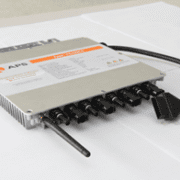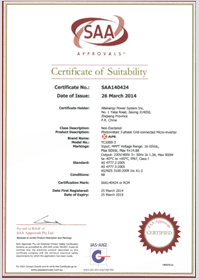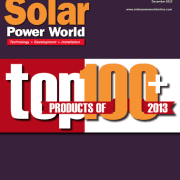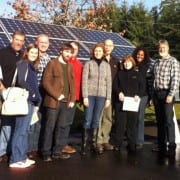Congressman Derek Kilmer Visits APS America
/in Events, General News/by APsystemsU.S. Congressman Derek Kilmer visited the APS America offices near Seattle recently.
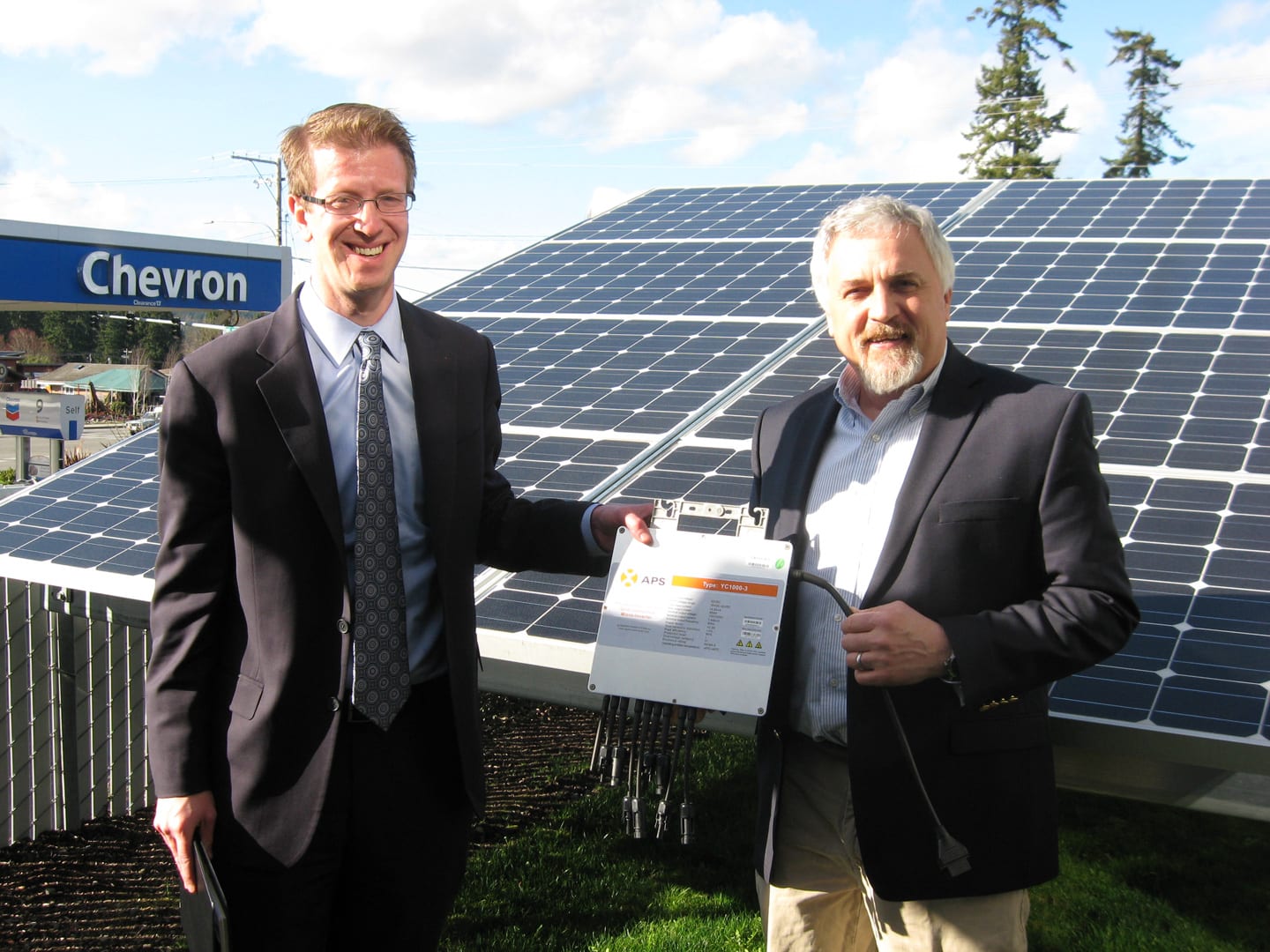 Kilmer, who represents Washington’s 6th Congressional District, saw firsthand the assembly and testing of APS Microinverters as they were readied for shipment around the country. Kilmer and APS America CEO Kelly Samson discussed Washington state’s thriving solar industry and solar energy opportunities nationally.
Kilmer, who represents Washington’s 6th Congressional District, saw firsthand the assembly and testing of APS Microinverters as they were readied for shipment around the country. Kilmer and APS America CEO Kelly Samson discussed Washington state’s thriving solar industry and solar energy opportunities nationally.
Thank you to Congressman Derek Kilmer for his interest in solar technology and manufacturing, and for visiting APS America!
APS Microinverters to be distributed by Fortune Energy
/in General News, Press Release/by APsystemsFOR IMMEDIATE RELEASE
March 3, 2014
SEATTLE — APS America and Fortune Energy have reached a first-time agreement by which the California-based Fortune will distribute APS Microinverter products in the US.
Fortune Energy will add APS to their current Top-Tier portfolio of wholesale solar modules, inverters and racking supplies, effective immediately.
 “We are pleased to form this partnership with Fortune Energy,” said Paul Barlock, Senior VP of APS America. “APS is pushing the microinverter market in new and innovative directions, as our products offer more power-handling capability at a lower price point.”
“We are pleased to form this partnership with Fortune Energy,” said Paul Barlock, Senior VP of APS America. “APS is pushing the microinverter market in new and innovative directions, as our products offer more power-handling capability at a lower price point.”
Fortune Energy executives also hailed the agreement.
“Fortune Energy is excited to bring APS to our installers and homeowners because of the reliability of the product plus the great price and warranty. The people at APS really stand behind their products, which is great for our customers,” said Jack Meng, President of Fortune Energy.
“Fortune Energy is excited to bring APS to our installers and homeowners because of the reliability of the product plus the great price and warranty. The people at APS really stand behind their products, which is great for our customers.” – Jack Meng, President, Fortune Energy
Added Karen Hale, Sales Manager at Fortune Energy, “We are excited to add a quality brand, at the best value, to our portfolio.”
APS ranked No. 2 in global market share among top microinverter suppliers by shipments in 2013 (Source: GTM Research). Based near Seattle, APS America supplies and services APS products in North America. APS was founded in Silicon Valley in 2009 and is now a global leader in the development, manufacturing and marketing of solar microinverters based on their own leading-edge technology.
The APS solar solution, which includes the APS Energy Communication Unit and APS web-based Monitor, combines highly efficient power inversion with a user-friendly monitoring interface to provide reliable, intelligent energy for residential and commercial applications.
Fortune Energy, with locations in Sacramento, Los Angeles and Hawaii, was created in 2009 to bring quality wholesale solar/PV products directly to solar industry professionals. Their services are designed to fit the needs of solar contractors seeking to lower their customers’ energy costs, improve their wattage efficiency and provide support. Fortune energy will distribute APS inverters to all of their customers nationwide.
For information on APS solar microinverter projects, see www.apsamerica.com or email sales@apsamerica.com.
For information on Fortune Energy, contact Marketing@FortuneEnergy.net or call 916-492-2797.
APS ’ innovative Microinverters nominated for Solar Power World’s 2014 Leadership in Solar awards
/in General News/by APsystemsAPS ’ innovative Microinverters have been nominated for Solar Power World’s prestigious 2014 Leadership in Solar awards — VOTE for APS Today!
http://www.solarpowerworldonline.com/leadership-companies/apsystems-america/

APS Microinverters Make Solar Power World’s TOP 100 in 2013
/in General News/by APsystemsIn advance of its Q1 2014 rollout, the groundbreaking APS YC1000-3 microinverter was recognized by Solar Power World among its Top 100 Solar Products of 2013 in the magazine’s year-end edition. The YC1000-3 is the world’s first 3-phase, 4-panel microinverter for large-scale commercial solar installations – advanced technology designed in the USA and available only from APS.


MEET THE APS TEAM AT SOLAR POWER COLORADO, FEB. 24-26
/in Events, General News/by APsystems Paul Barlock, APS America Senior VP, and Michael Ludgate, VP for Business Development, will present the APS product line to installers and distributors at the annual conference sponsored by the Colorado Solar Energy Industries Association. This year’s event is being held at the Omni Resort and Conference Center in Broomfield, CO.“We’re going to COSEIA in response to the customer requests coming in to APS ,” Michael Ludgate says. “The word is getting out that APS is a microinverter innovator and in the top tier globally in microinverter units shipped.”
Paul Barlock, APS America Senior VP, and Michael Ludgate, VP for Business Development, will present the APS product line to installers and distributors at the annual conference sponsored by the Colorado Solar Energy Industries Association. This year’s event is being held at the Omni Resort and Conference Center in Broomfield, CO.“We’re going to COSEIA in response to the customer requests coming in to APS ,” Michael Ludgate says. “The word is getting out that APS is a microinverter innovator and in the top tier globally in microinverter units shipped.”
APS is on an aggressive growth curve in 2014, bringing our advanced microinverter technology to new markets across the US. Our flagship product is the YC500A, a two-panel, dual-MPPT microinverter with 500W maximum output. APS is poised to release the groundbreaking YC1000-3 microinverter, a 3-phase, 4-panel unit for large-scale commercial applications – breakthrough technology available only from APS.
Installers and distributors can email the APS team directly at paul@apsamerica.com and michael@apsamerica.com to meet with them during Solar Power Colorado. Find out more about the APS line of advanced microinverter products at www.apsamerica.com or email sales@apsamerica.com.
For information on the 2014 Solar Power Colorado event, see www.coseia.org.
APS announces product recognition and promotion of exec to Sr. VP – Kitsap Business Journal
/in General News, Press Coverage/by APsystems
“We’re moving the market into areas that have not been penetrated,” Barlock said of the APS line of innovative solar microinverter products. “Our innovative technology is driving the market to a different, larger microinverter model, and at a lower cost.”
Grow Community Solar Install
/in General News/by APsystems Grow Community on Bainbridge Island is the largest planned, solar-ready neighborhood in Washington state. With an array of APS Microinverters and Itek PV panels planned on over 50 neighborhood roofs, each producing up to 7,680 watts of power per residential system. The solar on each Grow Community home will save between 2.5 and 3 tons of coal per year. Here are some pictures from this weeks solar install by A&R Solar.
Grow Community on Bainbridge Island is the largest planned, solar-ready neighborhood in Washington state. With an array of APS Microinverters and Itek PV panels planned on over 50 neighborhood roofs, each producing up to 7,680 watts of power per residential system. The solar on each Grow Community home will save between 2.5 and 3 tons of coal per year. Here are some pictures from this weeks solar install by A&R Solar.
Legislative Visit to APS Headquarters
/in General News/by APsystemsWashington State Sen. Christine Rolfes toured the APS America headquarters recently, joined by Jessie Turner, legislative assistant to state Rep. Drew Hansen. Rolfes (center) and Turner (third from left) saw firsthand the APS assembly and testing operations, learned more about our innovative technology, and celebrated the propulsive growth of the local solar industry.
Thank you to Sen. Christine Rolfes and the office of Rep. Drew Hansen for their ongoing interest and support for a clean energy future!

TOASTING A GREAT 2013
/in General News/by APsystemsSeason’s greetings and a year-end Thank You to our many solar partners for APS America’s outstanding success in 2013. Just a few of the year’s many highlights:
- Sales of our APS Microinverter line are up 500 percent year over year
- With significant new distribution partnerships, we made inroads to expansive markets across the US including California, North Carolina and Florida
- We doubled the size of our distribution center to keep up with installer demand
- We tripled our production and distribution workforce, tapping the experience and talent in our local community to fill out the APS America team
New APS Microinverter installations were completed across the continental US and beyond. Topping the list were the ambitious Mililani Shopping Center project in Hawaii, Everett (WA) Community College, the Bainbridge Island Museum of Art, and six major commercial installations with the Tennessee Valley Authority. These high-profile community installations show the power of APS Microinverter technology in action every day!


